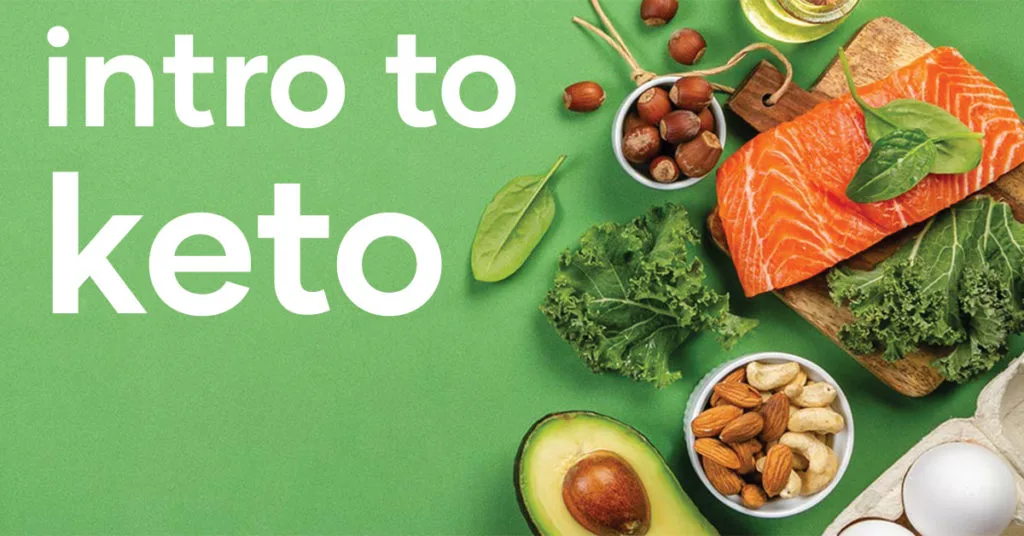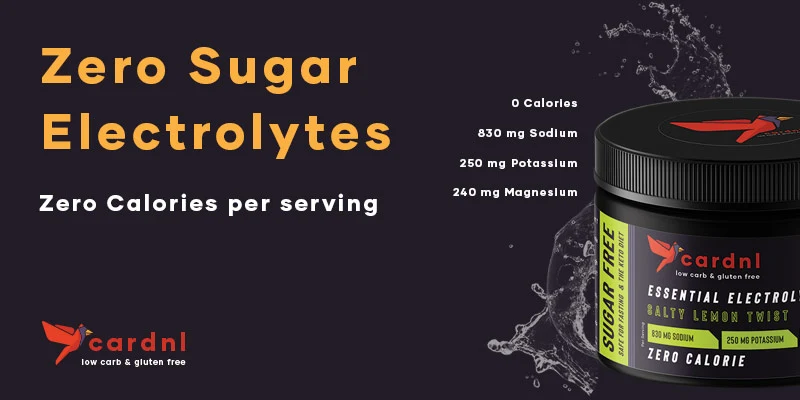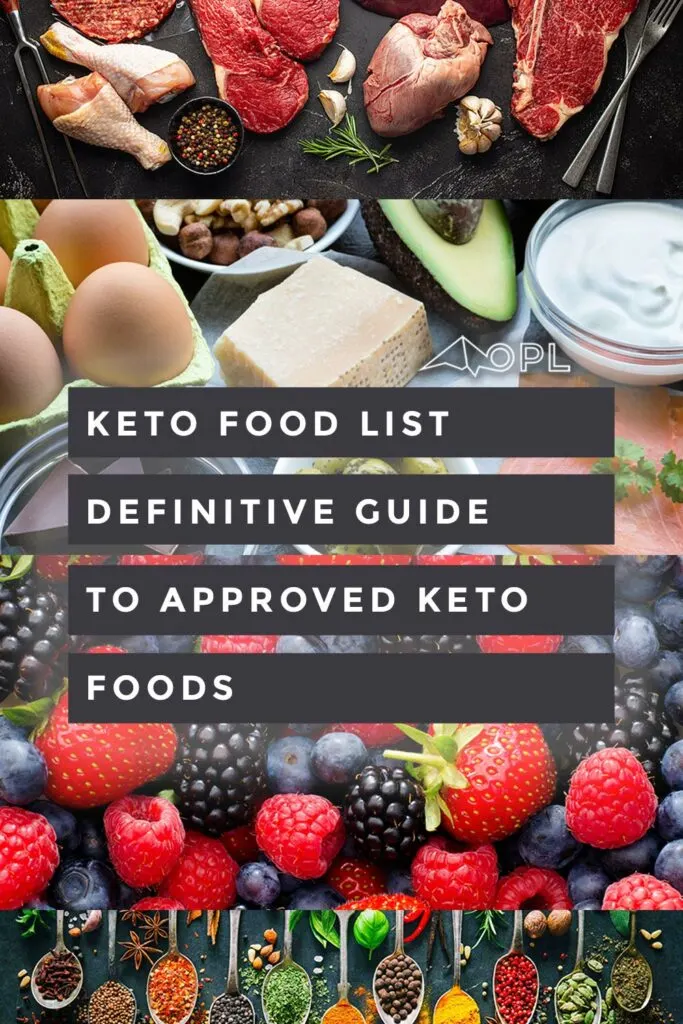Interested in the Keto diet but not sure where to start? This INTRO TO KETO guide will help you understand exactly what’s going on with your body, what you need to do, and how to make Keto sustainable.

There isn’t a one-size-fits-all diet. The Keto Diet should be viewed as one tool (not the end-all solution) in the search for health and longevity. -Rob Benson
What is Keto?
Your body has two methods of entering ketosis:
- Fasting
- Nutritional Ketosis
Fasting Ketosis
Your body is starved of macronutrients and attempts to inevitably use fat stores as energy. This conversion of fat to fuel is ketosis.
Nutritional Ketosis
You purposefully change your diet to encourage your liver to create ketones for energy (rather than glucose). You can accomplish (and enter in to) nutritional ketosis by significantly reducing carbohydrate intake while also significantly increasing fat consumption.
Benefits of getting into Ketosis
Appetite Reduction – Many studies show a correlation that with a reduction of carbs and an increase in fat intake that those monitored have a reduced appetite.
Improved Cognitive Function – Your thought processes become cleaner, clearer, more precise. Reduction in brain-fog and improvement in the ability to focus.
Fat Loss – Your body will utilize fat stores for energy. You’ll also stop storing excess carbohydrates as fat for energy later.
Reduction of Acne – Reduction of blood sugar fluctuations & improved gut bacteria health (reduction of refined carbohydrates). You’ll also help to regulate hormones and inflammation on a Ketogenic Diet, naturally reducing acne.
Cancer Therapy – Ketosis has been and is being used with success in relation to chemotherapy radiation. Most cancer cells are unable to use ketones bodies for energy. Ketones may inhibit the proliferation of cultured tumor cells. (3)
Seizure Reduction – The Keto Diet was established for treating children with epilepsy over 100 years ago.
Heart Health – Insulin resistance is improved or avoided via a Ketogenic Diet. Triglycerides (for the majority of the public) will drop.
Blood Sugar & Insulin Dosage Reduction – Studies have shown that a reduction in carbs and an increase in healthy fat consumption help to regulate blood sugar and insulin levels. (1, 2)
Keto is Not
Keto is not Ketoacidosis. If you are a type 1 diabetic, ketoacidosis is real. If you’re not a type 1 diabetic (if you have a functioning pancrease), do not worry.
Keto is not Paleo. Paleo focuses on the consumption of specific food groups and the avoidance of others. Paleo does NOT take into consideration the balances of fats, proteins, and carbs in a person’s diet.
Becoming Fat Adapted
Give your body 6-10 weeks of strict Keto to find out how Keto actually works for you. If you go halfsies (meaning you eat high amounts of carbs here and there) you’ll never know how nutritional Ketosis actually works for you. At about 6-10 weeks of strict Keto your body will become fat adapated (generally speaking). When you’re fat adapted your body will naturally want to jump back into Ketosis regardless of what you eat during one or two meals. You’ll quickly bounce back into ketosis with little to no effort. This is a very powerful way to live. Be a fat burner, not a sugar burner. Your body will use ketones rather than glucose for it’s general, daily energy needs. Note: your body will always produce glucose – when you’re fat adapted you can burn both fuels more efficiently.
Getting Started
Control Your Environment
If you’re going to start Keto don’t travel or make things harder on yourself.
Create an Eating Plan
Buy the foods you know you’ll need to eat. Have approved snacks at the ready. Tip: write out exactly what you can eat each day and check off the items you eat. It’s easier than counting macros and figuring out during the day. It’s work up front, but it’s going to help you stay true.
Get Up and Move
Lot’s of movement to help deplete glycogen stores and to keep you active.
Stay True to Fat Ratios
For every gram of protein you eat, eat 3 grams of fat. Find foods that like (healthy fats) and make sure you have a lot on hand. Add fats to your salads, eggs, drinks, etc. Load on fat.
Supplements Help (when starting Keto)
- Electrolytes – Load up on electrolytes including Sodium, Magnesium, and Potassium. It’s vital, really vital. Read this post on how to pick the right natural electrolytes.
- Exogenous Ketones – Include Beta-Hydroxybutyrate (BHB) which is an exogenous ketone – this will assist in letting your body know what ketone power is like. It’ll also give you a boost at the start as you transition. Long term, don’t consume exogenous ketones (unless you need a boost of energy for an event). This (along with increased fat intake) really primes the pump.
- Collagen – Collagen helps to protect the lining of your digestive tract, which helps improve digestion. Many people report feeling better when taking a collagen supplement regularly. + the benefits of better skin, hair, and nails isn’t a bad side-effect.
- Caffeine – Caffeine will encourage fatty acids to get mobilized – helps to take fat to the liver to create ketones.
Don’t Eat Dairy
The Keto Flu
You’re not actually going to get the flu. However, you will go through a change (your body is going to change fuel sources, this is a pretty big deal). People typically experience a headache, feelings of being run down and tired, lethargic, etc. Note: for every gram of carbohydrate in your body, your body is holding 3 grams of water. Keto is a natural diuretic. You’re going to lose a lot of water weight to start and in turn, a lot of electrolytes.

How can you avoid the Keto Flu?
Consume high quality electrolytes and stick to the 3 grams of fat to every 1 gram of protein you eat. Read this post on how to get in to ketosis quickly.
Fasting
Fasting is a big part of successful Ketosis. From the benefits of Autophagy (degradation and recycling of cells) all the way to reduction of overall daily caloric intake. Fasting naturally helps to promote ketone production.
Intermittent Fasting
Also referred to as IF, Intermittent Fasting is where you reduce the number of hours on a daily basis where you allow yourself to eat calories. Most people start with a 10-hour window. This means you consume calories during this window of time. For example, you start eating at 9 am and quit eating at 7 pm. Even better is a 16/8 – limiting calorie consumption to 8 hours in a 24-hour window. Fasting allows your body time to rest and recover. It’s essential and is completely lost in our society today.
How do I measure Ketone Levels?
Urine Strips
At the start, the pee strips will work well. But know: these urine strips are only telling you what you’re peeing out. Good at the start but long term serve no benefit.
Blood Testing
Buy an at-home glucose monitor that also tests ketones. You won’t always need to test but it’s a good idea to help you know what foods are better for you, personally. At the start, test often and get a sense at what changes positively affect your glucose levels. Don’t try and chase “good ketone numbers” Understand that if you’re optimal, you’re using your ketones for energy, this will mean your Ketone levels aren’t too high.
Continuous Glucose Monitor (CGM)
There’s really no better way to know what foods to avoid that to wear a CGM, read more here.
What foods should I eat on Keto?
I believe your food sources should be Paleo. Remember, Keto isn’t Paleo. But that doesn’t mean you can’t eat Paleo foods on a Ketogenic Diet. Check out this post on what foods are good on a Ketogenic Diet.

BONUS Notes on Keto Food:
Lean Meats on Keto
If you’re buying industrially produced meat, avoid the fat. If you’re buying grass-fed and finished/wild meats – eat all of the fat!
Keto Fruits
Fruit must go through the liver first, you can only process a small amount. Eat with the seasons and stick to berries in low quantities. Treat fruit as a treat!
Keto Good/Bad Sweeteners
Read all about sweeteners in this post.
Favorite Sources of Fat on a Keto Diet
- Avocados
- Eggs (the yolks are mostly fat) – whites are mostly protein
- Bison & Beef Tallow, Duck Fat
- Medium Chain Triglycerides (MCT Oil)
- Avocado, Olive, Coconut Oil
- Butter & Ghee
- An assortment of Nut Butters
- Sardines (yes, a lot of protein – but also a great source of high-quality fat)
- Homemade Sauces
The information provided on this website is meant for informational purposes only. This information should not be construed as personal, medical advice.
